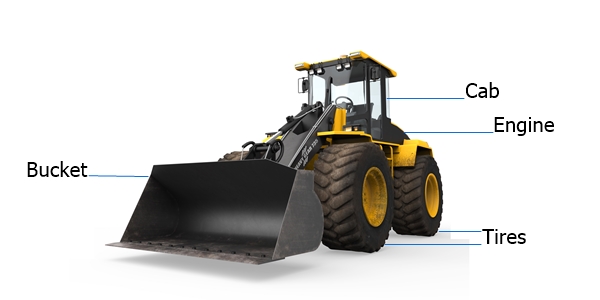Wheel Loaders
Common Uses Main Components Manufacturers & Models
Common Uses for Wheel Loaders
The wheel loader is a reliable, productive piece of equipment that offers precise, quick, and profitable handling of materials. They come in a variety of sizes from compact to large, and allows for a variety of attachments in addition to the bucket to complete any job.
Main Components for Wheel Loaders
The wheel loader’s real supremacy comes from the attachments powered by hydraulics. The most popular attachment is the bucket that can come with teeth or cutting edges. Additional attachments include handling arms, grapple parts, and loading forks.

Manufacturers & Models
Investing in any heavy-duty machine is an important decision. Consider these four factors before purchasing a wheel loader:Type of Work
Evaluate your needs to determine what type of work you are doing, how heavy the loads are, and over what terrain will the load be moved. This will help you determine other components- like the need for tire chains and what attachments you need.
Tipping Load
The tipping load is the point at which the rear tires leave the ground when the attachment is fully articulated. It is the maximum load capability for safe operation of the machine. There is no standard tipping load for every size machine, so it is important to check the counterweight, tire size, and other components that affect tipping load to ensure you are getting a machine that can carry your load.
Horsepower
Make sure you check the manufacturer’s determination on horsepower because each wheel loader is different. Some may include horsepower loss due to cooling fans while others do not. Wheel loaders come in four classifications: compact - 80 horsepower or less, small - 80 to 150 horsepower, medium - 150 to 200 horsepower, and large - 200 to 250 horsepower.
Bucket Material
Bucket size is typically referred to as loader size (example: 6-yard loader). You can put larger buckets on your machine using buckets that are made of lighter material. It is important to understand what type of material the bucket is made of so that you don’t go over the tipping load or exceed the maximum horsepower when attaching a larger bucket.
Top Wheel Loader Models
